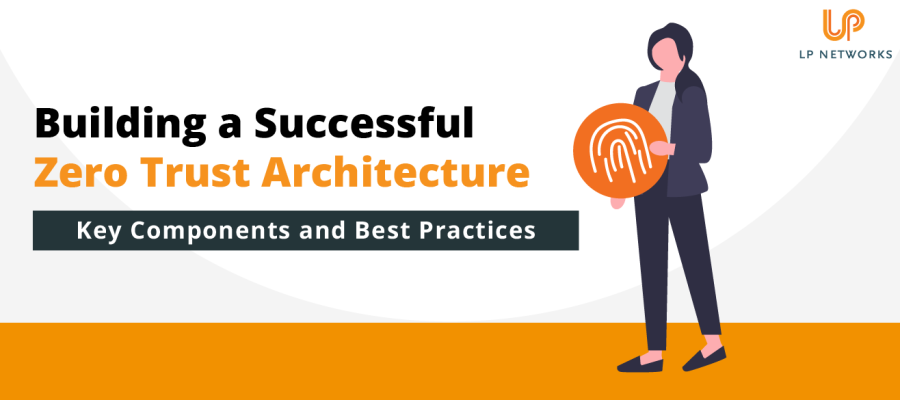- Solutions For
Specialist IT Support Services for:
- Popular Services
- Security
Security
- Our Expertise
Our Full Range of IT Services
- Learn
- About Us
- Contact
Posted 28th May 2023

In today's dynamic cybersecurity landscape, businesses need to adopt robust security models to protect their valuable assets from cyber threats. As we've already discussed the importance and benefits of Zero Trust, it's time to delve deeper into the core components of a successful Zero Trust architecture and best practices for its implementation. In this blog, we'll cover the key elements of a Zero Trust security model and provide actionable tips on how to build and maintain an effective Zero Trust architecture.
A successful Zero Trust architecture is built on the foundation of multiple critical components. Here are some key elements:
A. Identity and Access Management (IAM)
IAM is a crucial aspect of a Zero Trust model, as it helps in establishing and managing user identities, access permissions, and user authentication. Implementing a robust IAM solution ensures that only authorized users have access to specific network resources.
B. Multi-Factor Authentication (MFA)
MFA adds an extra layer of security by requiring users to provide multiple forms of identification before granting access. It can include something the user knows (e.g., password), something the user has (e.g., security token), and something the user is (e.g., biometric authentication).
C. Micro-segmentation
Micro-segmentation involves dividing the network into small, isolated segments to limit the spread of a security breach. By creating granular access controls, you can minimize the risk of lateral movement and contain threats within a small segment.
D. Encryption
Protecting sensitive data with encryption, both in transit and at rest, is essential for a Zero Trust architecture. It prevents unauthorized access to your data, even if a malicious actor manages to bypass other security controls.
E. Continuous Monitoring and Analytics
Continuous monitoring and analytics tools help you detect and respond to security incidents in real-time. These tools can provide insights into user behaviour, identify anomalies, and flag potential threats for further investigation.
Implementing Zero Trust may seem daunting, but following best practices can help you achieve success:
A. Assess Your Current Security Posture
Before implementing Zero Trust, assess your existing security infrastructure and identify the areas where you need improvement. This will help you prioritize your Zero Trust initiatives and allocate resources effectively.
B. Develop a Comprehensive Strategy
Develop a detailed Zero Trust strategy that outlines your goals, timelines, and resource requirements. Ensure that your plan includes not only technology implementations but also training, education, and process changes.
C. Implement in Phases
Instead of trying to implement Zero Trust all at once, adopt a phased approach. This allows you to address the most critical security gaps first and gradually build up your Zero Trust architecture over time.
D. Leverage Existing Security Solutions
If possible, leverage your existing security solutions and infrastructure to minimize costs and disruption. For example, your current IAM solution may be able to integrate with Zero Trust principles with minor adjustments.
E. Foster a Security Culture
To ensure the success of your Zero Trust initiative, cultivate a security-conscious culture within your organization. This includes regular security training for employees, promoting security best practices, and encouraging everyone to take responsibility for their role in maintaining a secure environment.
Adopting a Zero Trust security model is a critical step in protecting your business from modern cyber threats. By understanding the key components of a Zero Trust architecture and following best practices for its implementation, you can create a more secure, resilient, and agile network infrastructure that can withstand the ever-evolving threat landscape. Remember that Zero Trust is not a one-time project but an ongoing process that requires continuous monitoring, maintenance, and adaptation to stay effective in the face of emerging threats.
Get in touch to find out more about the Zero Trust Security Model.

